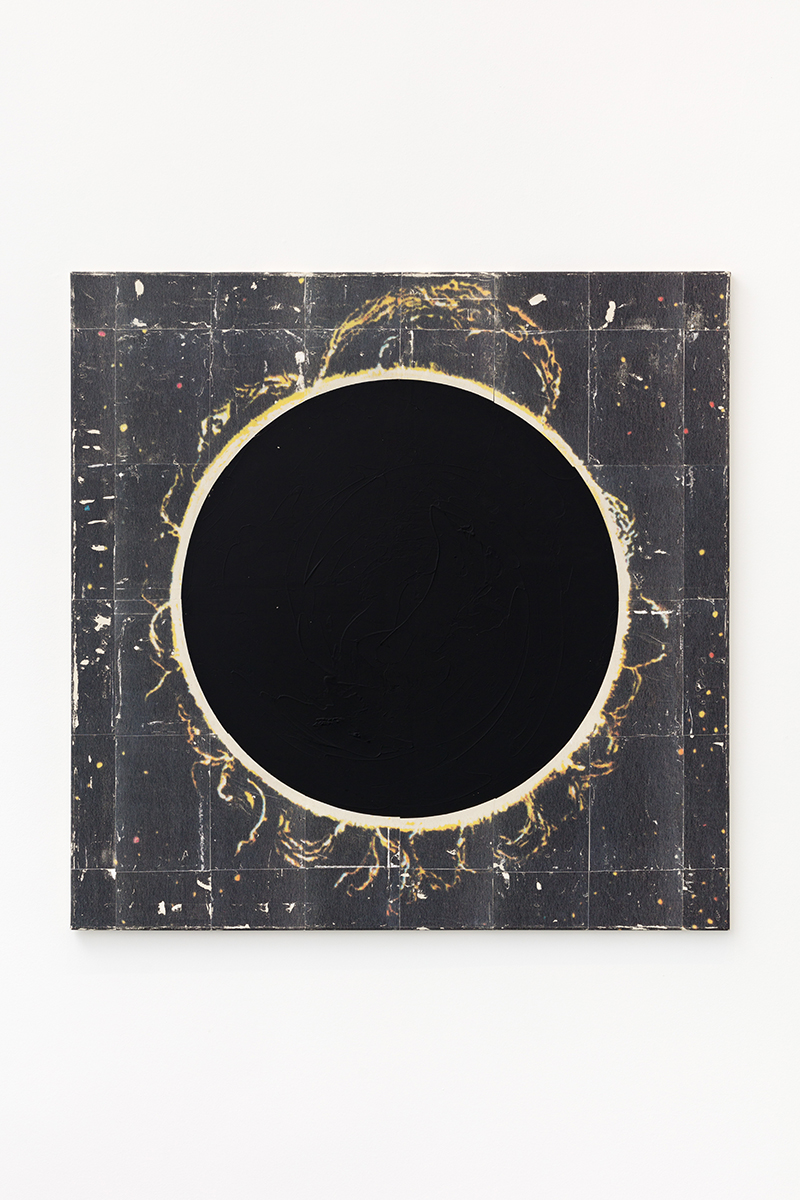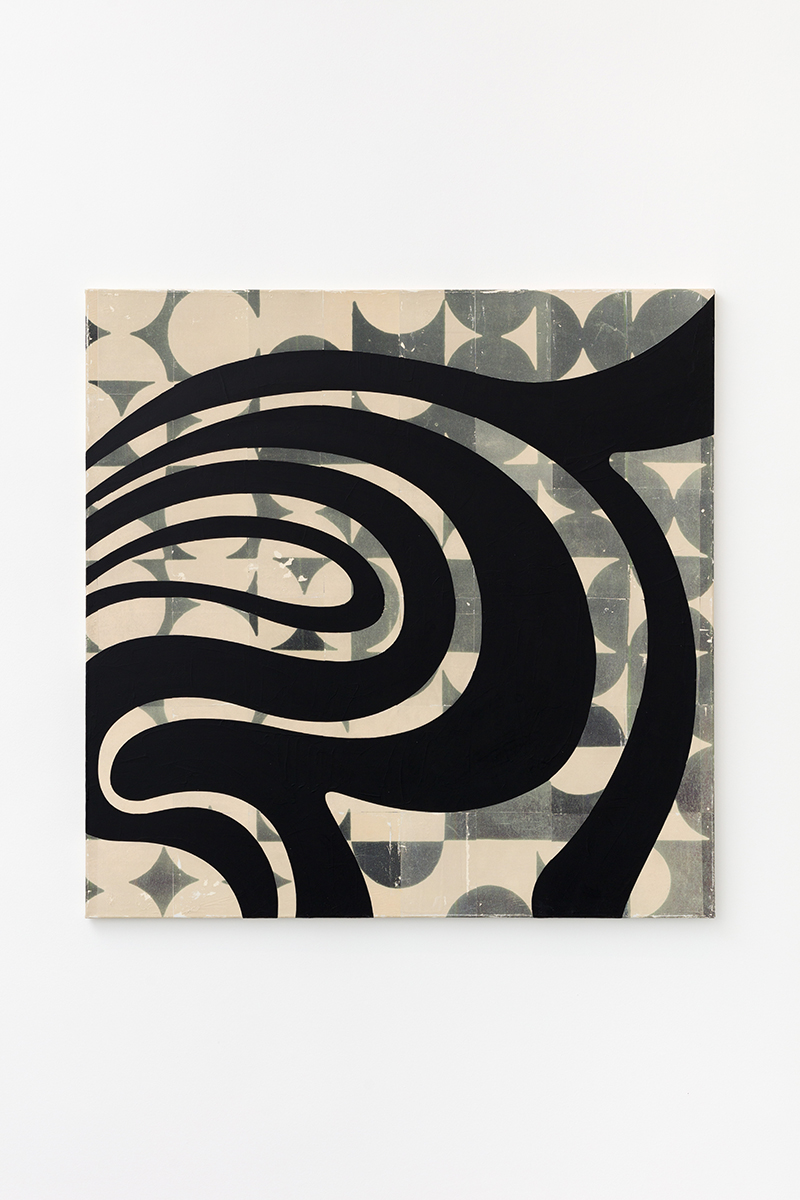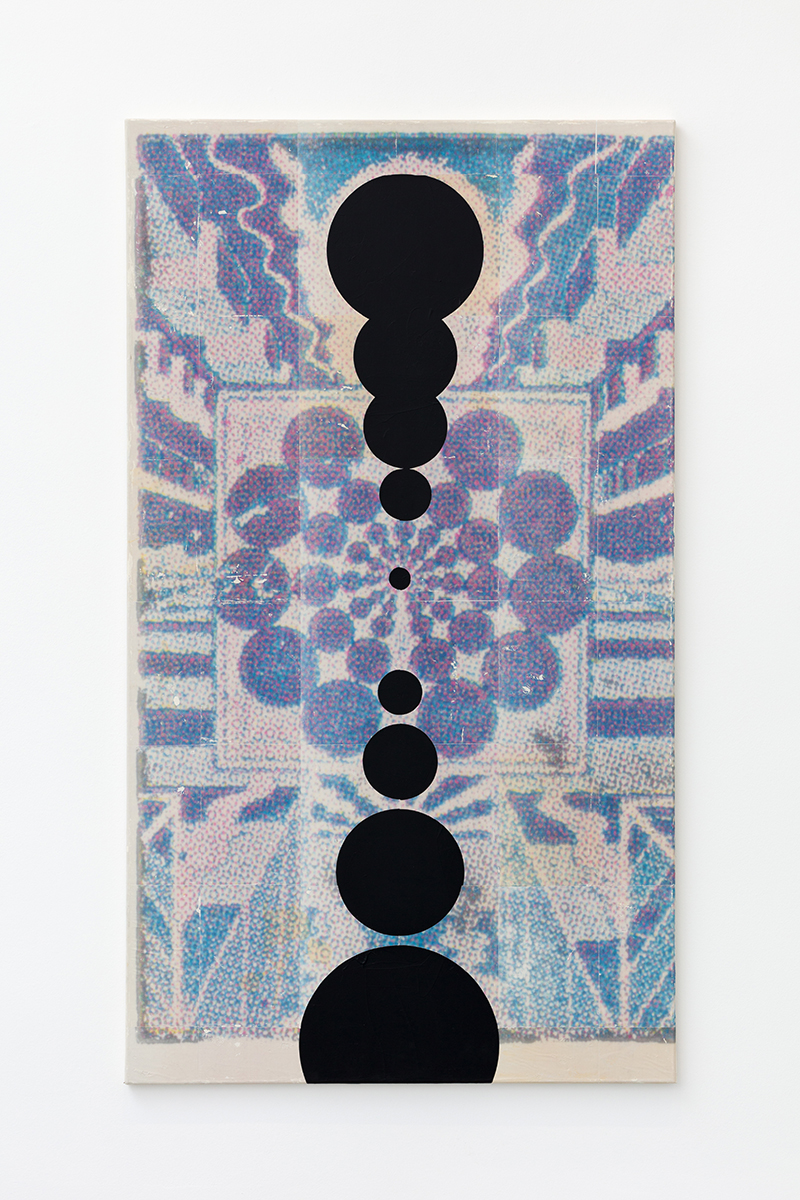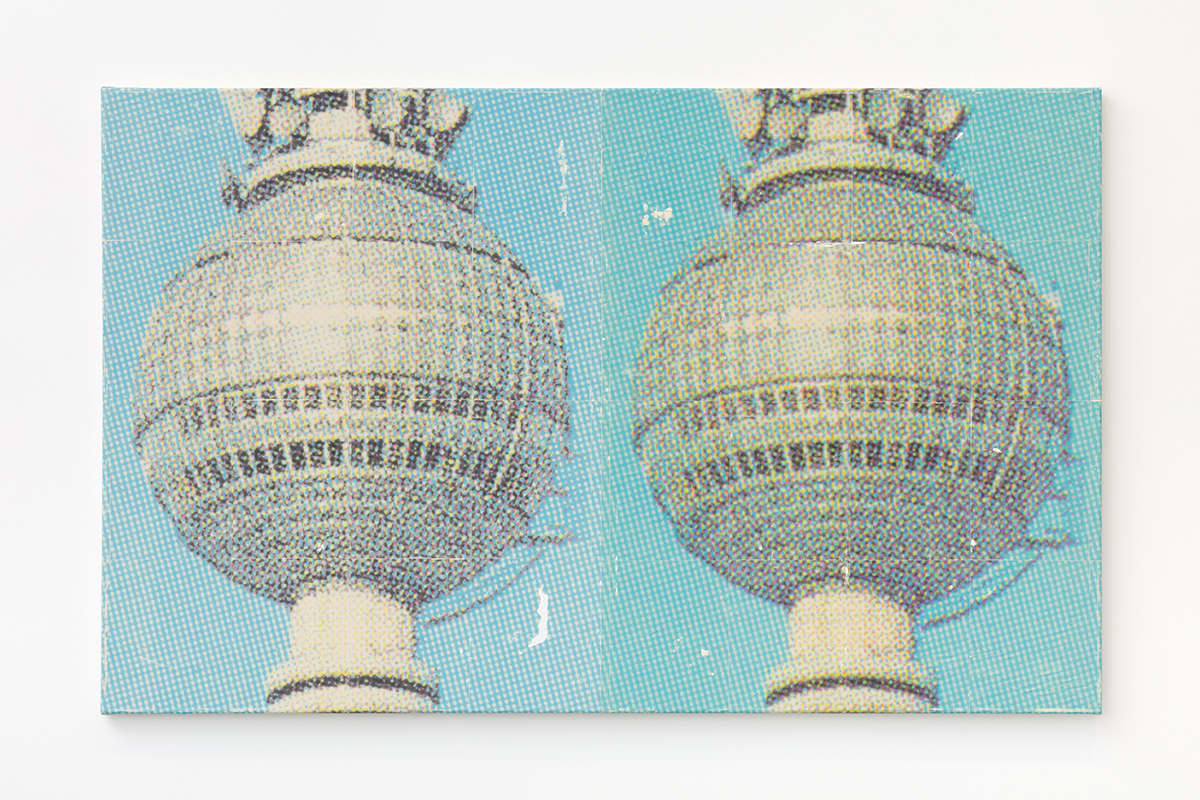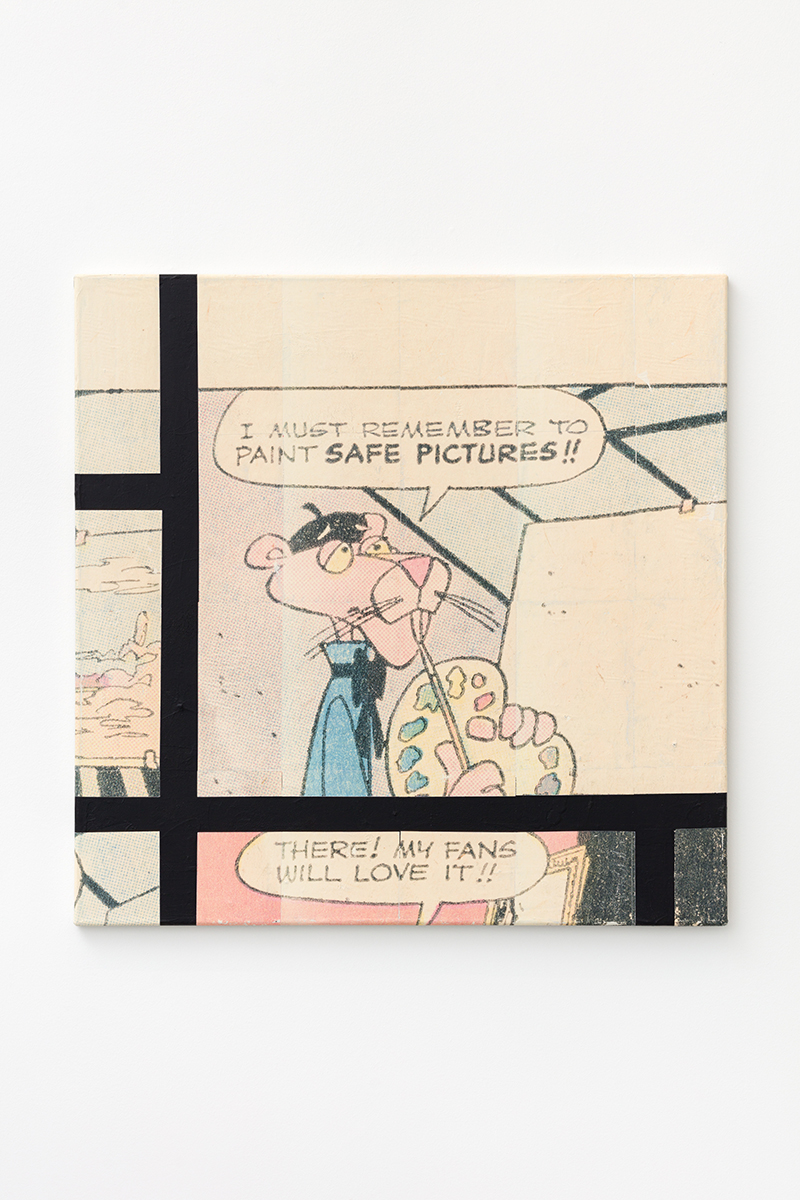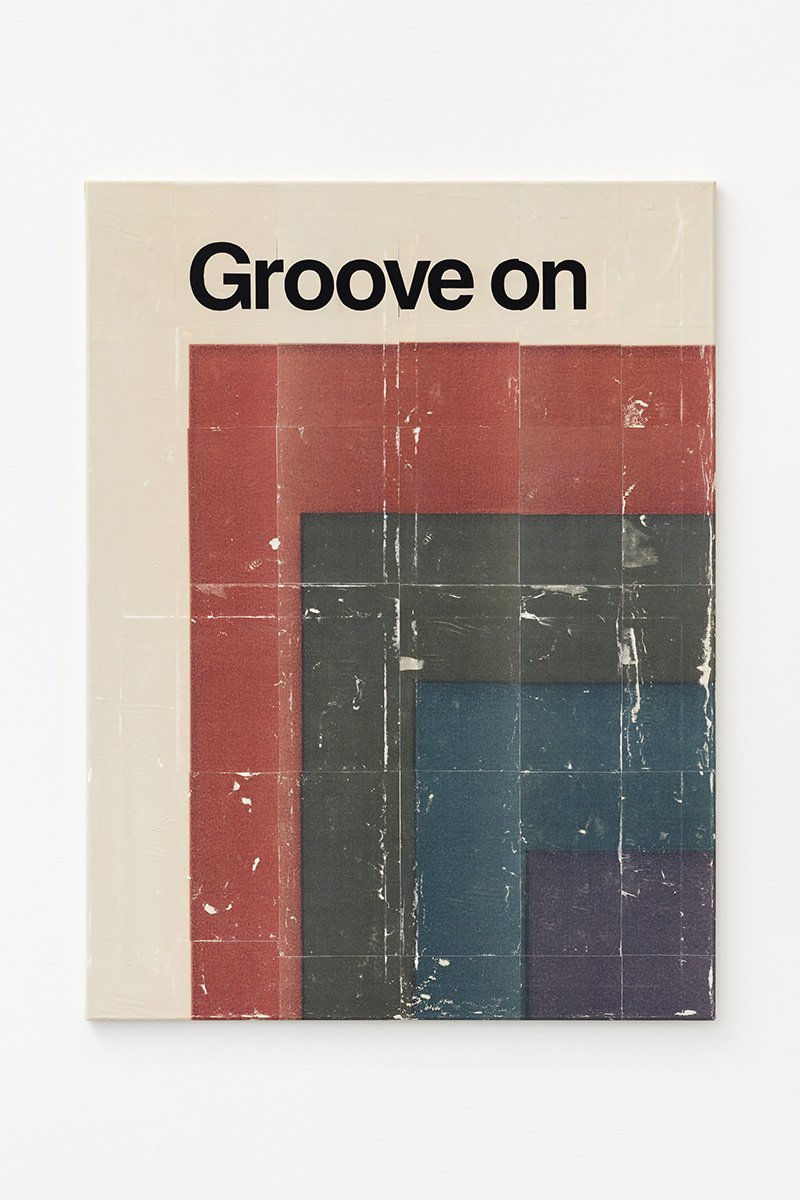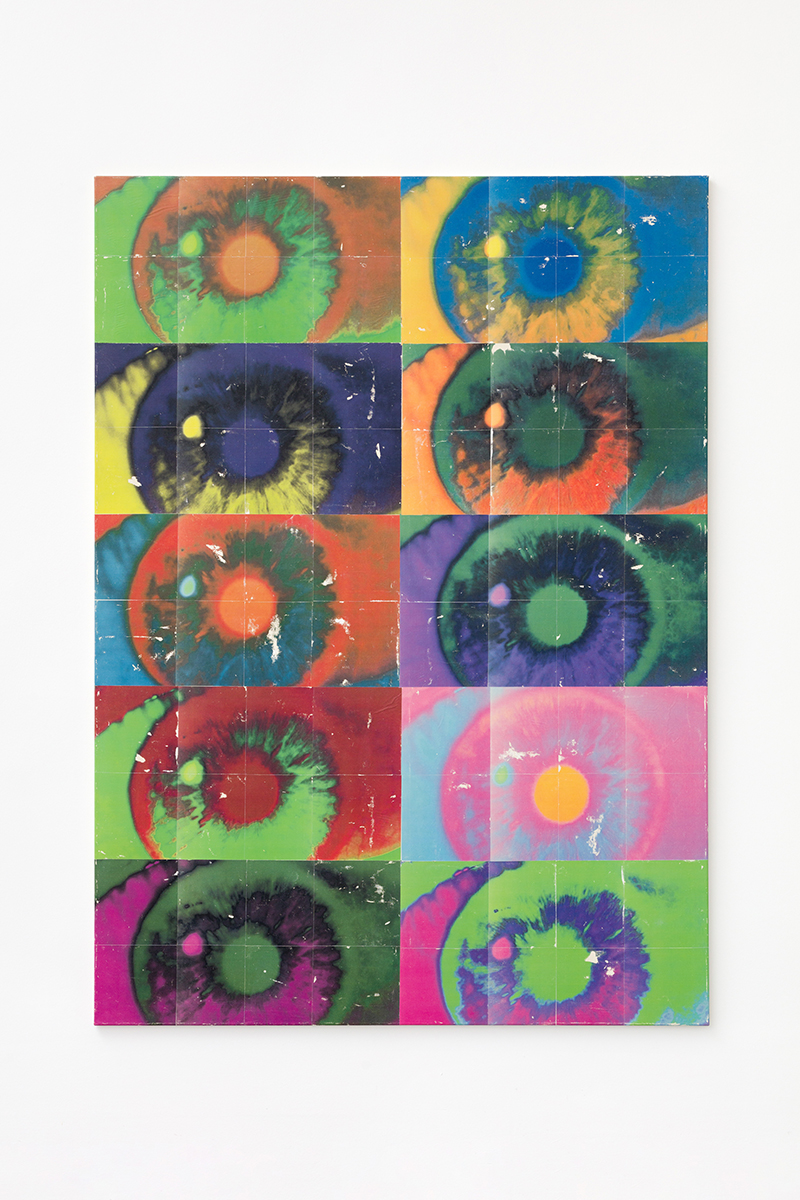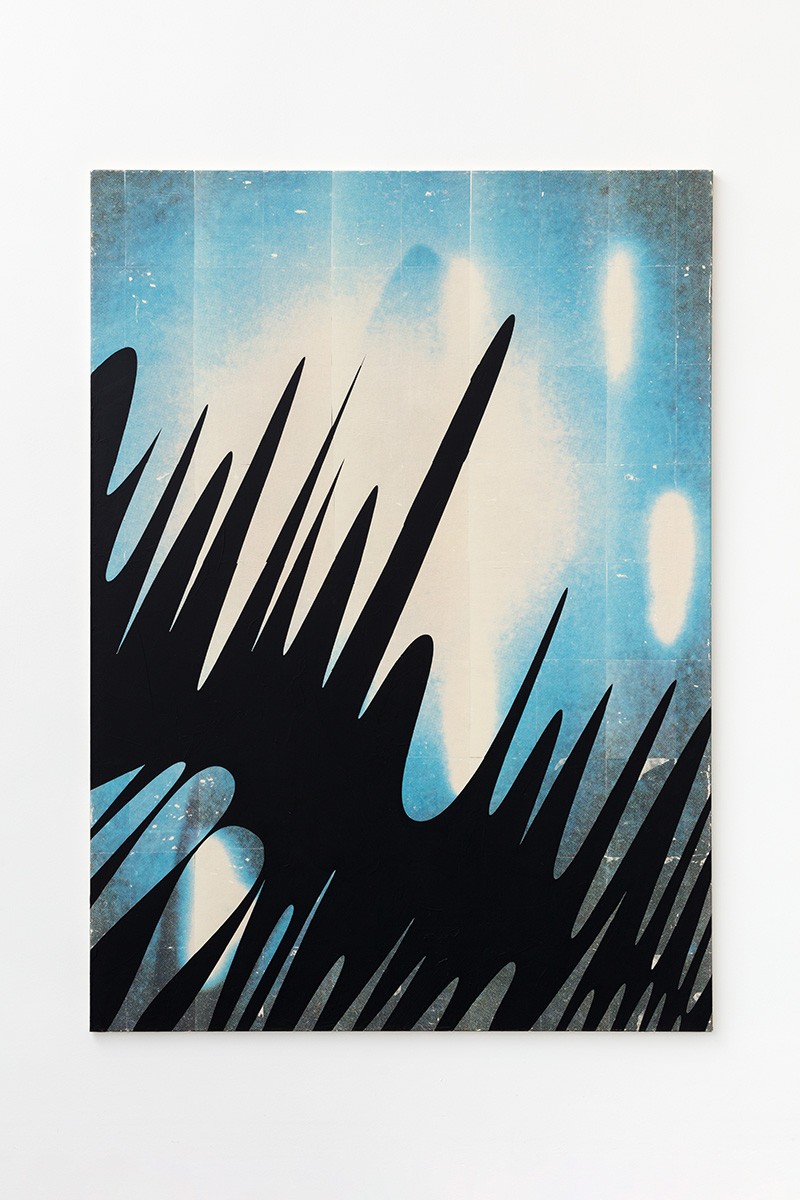Márk Fridvalszki: Uforia
2 April – 10 May 2024
The title of Márk Fridvalszki’s first solo exhibition at Vintage Gallery elevates the name of a 1967 festival that took place in the UFO Club, a centre of British counterculture – as a travelling utopia into the Present. The UFO metaphor, becoming central in Fridvalszki’s recent works, was capable of condensing the whole countercultural zeitgeist into itself during these years: the “seductive strangeness” of radical changes and alternative lifestyles due to the social, art and technology revolutions around 1968, dimensions of consciousness opening through psychedelics or Eastern spiritualism, Pink Floyd’s space-rock launched at the UFO Club or the futurist jazz of Herbie Hancock, Miles Davis and Sun Ra, as well as the sci-fi fantasies expanding around the moon landing, from Tarkovsky’s Solaris to Kubrick’s 2001: A Space Odyssey.
Just like in A Space Odyssey, the UFO dimension in Fridvalszki’s works prise open the collage-compositions constructed from archival image material in the form of space-black abstractions, as a cosmic horizon or line of flight expanding its temporal and spatial framework, or as a fourth dimension bending space-time, which is the source of the spirit of the avantgarde from the beginning, due to Duchamp and Picasso. The collage principle defining these works, the arrangement of textual and visual elements drawn from diverse sources into an integrated presence and sense itself embodies the perspective of a fourth dimension, just as the alien played by David Bowie in the 1976 Man Who Fell to Earth simultaneously watches twelve TVs with various programmes.
Elliptical, circular and spheric motifs, populating the panels of Fridvalszki are likewise UFO metaphors to the extent that the UFO itself is a metaphor, on the one hand for a cultural ideal, of popular modernism that strives to redistribute and turn the avantgarde-modernist experimental sphere into a democratic public culture, and on the other hand, a political ideal, planetarism, continuing to envision a leftist-progressive alternative against capitalist globalism. The textual and visual references in Fridvalszki’s works on view here relate to both of these closely connected ideals, just as the circular and spheric motifs roll from the miniature Ben Day dots of comics to the planetary images of cosmic dimensions, from the book and album covers embodying “popular abstraction”, through the pair of eyes of David Bowman exposed to psychedelic abstraction, all the way to the pair of globes of the Berlin Fernsehturm. Through all of this, Fridvalszki’s artistic trajectory also comes full circle: while Uforia constitutes the next station of his programme of “future archaeology”, it is also a return to the various aesthetic and contextual elements of his works preceding his current period from 2018, reaching all the way back to his earliest works made some fifteen years ago, consisting circular compositions, cosmic visions, technological alienation and alien technologies.
Barnabás Zemlényi-Kovács
Márk Fridvalszki (1981, Budapest, lives and works in Berlin) graduated from the Academy of Fine Arts in Vienna in 2011 and was a postgraduate Meisterschüler student at the Academy of Fine Arts in Leipzig (2014–2017). Since 2014 Fridvalszki is the co-initiator and graphic editor of the publishing project and cross-disciplinary collective Technologie und das Unheimliche or T+U.
Archeo-futurology, the excavation and elaboration of visual, sonic and textual remains of utopian cultural periods and lost future-visions in a post-futuristic, atemporal age, has become the prime method in the art of Márk Fridvalszki since 2018. The collage-compositions have been primarily built from the (counter)cultural fragments of two eras around the years of 1968 and 1989, marking the starting and endpoint of an epoch that British cultural theorist Mark Fisher called Popular Modernism. Critical nostalgia, which fuels the works of Fridvalszki, is not towards the past but the future: it summons the exorcised ghosts of this cultural and political paradigm in order to burst out from our claustrophobic Present with the wide horizons of Popular Modernism.








